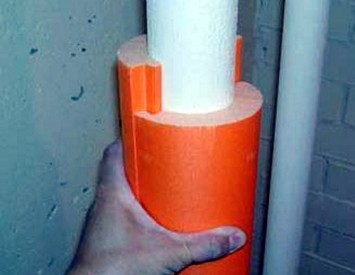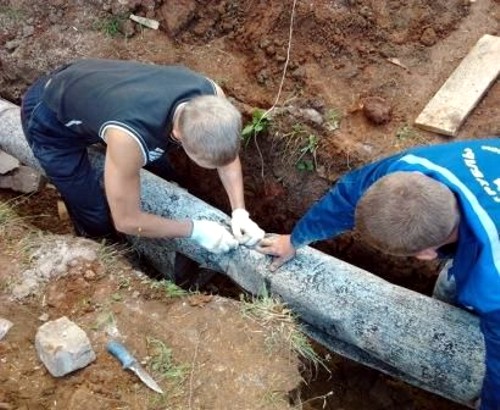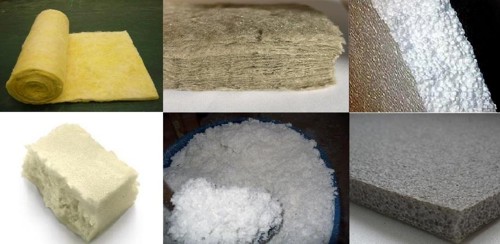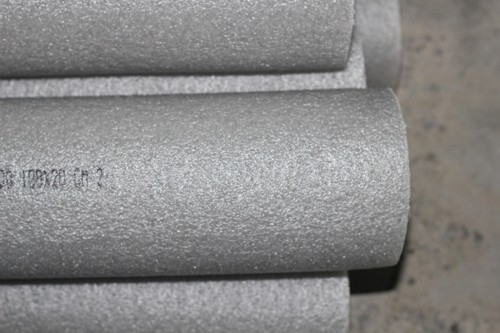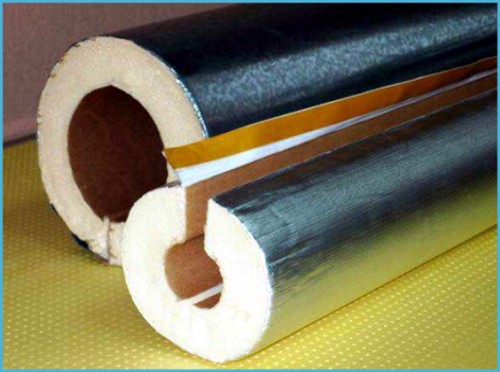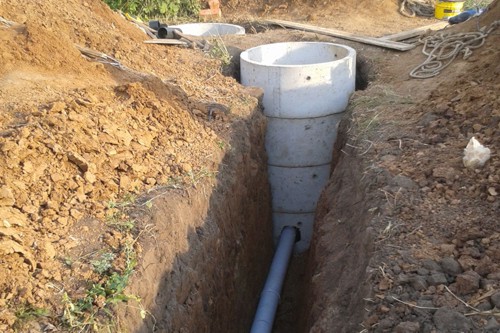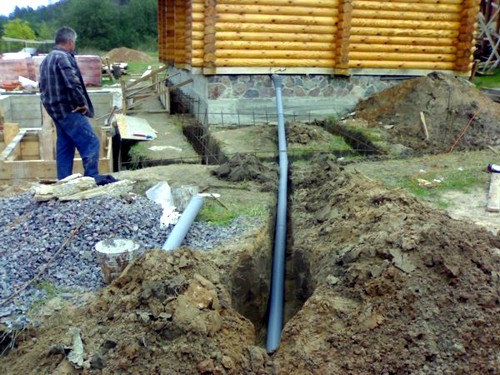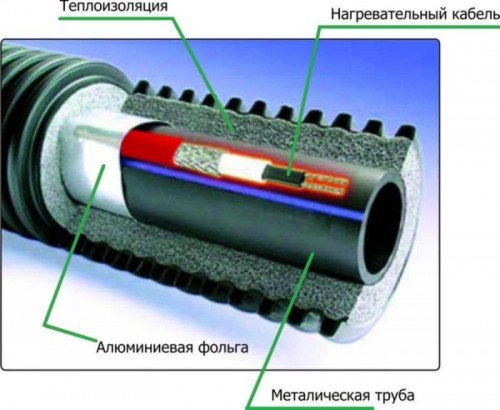Sewerage is an integral element of almost every building and structure. If you properly care for the water disposal system, then it will last you much longer. The main point when caring for sewer pipes is their insulation.
Content
Why insulate the pipes
Many owners of country houses, one way or another, are faced with the issue of insulation of sewer pipes. Many people think that this is not necessary. Experts consider it differently. The need to warm pipes will depend on the climatic zone, as well as on the technology of construction and passage of communications.
If the building is built in the area where the temperature is rarely reduced to a minus one degree, then the sewer pipes are not necessary. But if the building is built in areas with a harsh climate and frosty winters, then the insulation of sewer pipes is considered mandatory.
There is another option, in which the pipes are not worth it to additionally - when the communications are paved at a certain angle and are lower than the freezing layer.
It is necessary to carry out thermal insulation of pipes if:
- the pipeline does not pass in a straight line, but with a turn;
- the depth of the sewer pipe is half a meter ;
- when there is a slight bias of communications (less than half a million per meter linear);
- when the bias of the pipes, on the contrary, is significant and exceeds one and a half centimeters per meter linear;
- when pipes are often clogged;
- so that the pipe does not burst in the cold (due to the difference in temperature);
- so that in the cold, wastewater does not freeze in the pipe, turning into an ice mash.
In any case, the insulation of the sewer pipe will not be superfluous both on the street and indoors.
Pipe insulation materials
There are materials with which you can insulate sewer pipes in the ground and in the house.
For insulation of the sewer pipe in the ground are used:
- fiberglass wool. This material ten years ago was considered the only heater for pipes. Now technical cotton wool is extremely rare, because for its installation it is necessary to add additional use of auxiliary materials - waterproofers. As a result, it turns out that the effectiveness of this material will be low;
- the basalt insulation is easily mounted and has good thermal insulation properties. Among the disadvantages, the high cost of the material was noted;
- penalisterol is a sought -after thermal insulation material. It has good operational qualities, easily mounted. It is considered a budget option;
- polyuuretan foam, like its predecessor, foamopolisturol, holds heat well. It has the form of a “shell” into which the sewer pipe is “wrapped”. On sale you can find two types of pipes - ordinary and insulated. The latter are produced in a polyurethane foam membrane. In this case, the installation of pipes is significantly accelerated;
- penoizole - has a double action: it completely isolates the sewer pipeline, and also removes excess moisture from the soil.
For insulation of sewer pipes, the room uses:
- foamed polyethylene. A common type of heater for pipes. It allows you to easily and quickly insulate sewer pipes in the apartment.
How to choose a heater?
When protecting the sewer system on the street, it must be borne in mind that the insulation should not harm the environment and cope well with its task.
Let us consider in more detail the popular types of insulation: polystyrene foam, foam and mineral wool.
The foam has the form of a pipe half that connects with a special fastener.
The first two heater have a number of advantages:
- have a low weight, so it is convenient to transport and install them;
- easy to carry out installation work;
- have a long service life;
- environmentally friendly material;
- have an affordable price.
Due to its uniqueness, the shell of foam withstands any temperature and temperature fluctuations.
If we talk about durability, then a heater made of polystyrene and polysterol foam can last fifty years in a row. It also happens that the sewer pipe fails before the insulation itself.
Foam is allowed to install inside the premises, because it is self -adjusted, and during fire it will burn one, a maximum of two seconds.
If you decide to insulate the pipes in an old proven way - mineral or glass wool, then it is advisable for you to familiarize yourself with some nuances:
- This type of insulation cannot be called environmentally friendly material, because the mineral wool contains a large amount of caustic materials that destroy the soil.
- Over time, the insulation gives shrinkage and cracks form on it. Due to its peculiarities, absorb moisture, it is necessary to use an additional insulator in order to attach the material.
Warming of the sewer pipe on the street
To protect the pipes from freezing in the cold season, it is necessary to insulate them.
There are such methods of thermal insulation:
- engineering;
- using insulating material;
- active.
The first method It is considered the simplest, because when laying sewer pipes, they should be located below the level of freezing of the soil. Based on practice, the optimal depth of pipes is two meters or more. It depends on which region you live in.
Pipe insulation is performed according to this scheme:
- A trench of a certain depth is prepared so that you can lay pipes with a slope of one centimeter for each meter of length. The depth of the pipes can be found from the table. Each region has its own table.
- Then, at the bottom of the trench, you need to make a pillow of sand or gravel (grain size is not more than twenty millimeters). The thickness of the layer should be at least ten centimeters.
- Work is performed on laying sewer pipes.
- Now you should fill the pipes with sand or small gravel. The thickness of the layer should be at least twenty centimeters above the pipe. The layer needs to be well compacted.
- In order not to arise the question where to get gravel, use the material that was taken out in the preparation of the trench.
There are a number of points that this method of insulation can be ineffective. For example, soil structure or close arrangement to underground waters, the presence of insects and other harmful substances that can destroy the structure of the pipe.
With this method, it is also necessary to take into account the likelihood of a gust of sewer pipes. To restore the damaged area, it is necessary to dig a pipe or completely extract it, to replace it with a new one.
The second method - insulation of pipes with heat -insulating materials. Depending on the situation, a different type of insulation is used.
How to perform work on warming sewer pipes with your own hands:
- Out the place of the passage of the trench.
- Prepare a trench with a width of sixty centimeters and depth according to the project, plus a stock of five to ten centimeters.
- The trench must be equipped with a slope in order to provide a gear for passing fluid through the pipes.
- Put a layer of sand or gravel on the bottom of the trench (ten centimeters thick). Seal him.
- Lay the pipeline on the surface near the prepared trench.
- Perform a sequential connection of the pipes.
- Process the edges of the pipe and sealant itself with sealant.
- Now you can put on the insulation on the pipe and fix it with construction coat.
- The pipe needs to be lowered into the trench, connected and filled with a layer of gravel or sand.
- Perform the final backfill of the trench with soil. It is important to ensure that it does not have large stones and glass.
The third method Active insulation is considered the most effective, but also more costly. It consists in the need for laying in parallel to the sewage pipes of electric cables that will warm the drains. The heating system is regulated by the temperature sensor to which the entire automation is connected. If the water inside the pipes cools to the mark of zero degrees, then the sensor is triggered, and the cable begins to heat the pipeline. As soon as the temperature rises, the sensor automatically turns off.
This method of insulation, although it is considered effective, is relate to energy -dependent and is used in exceptional cases when the two previous methods were ineffective. It should be borne in mind that if you do not additionally insulate the pipes with heat -insulating material, it turns out that the cable will warm the ground, not your pipes.
How to make insulation of sewer pipes, watch this video:
